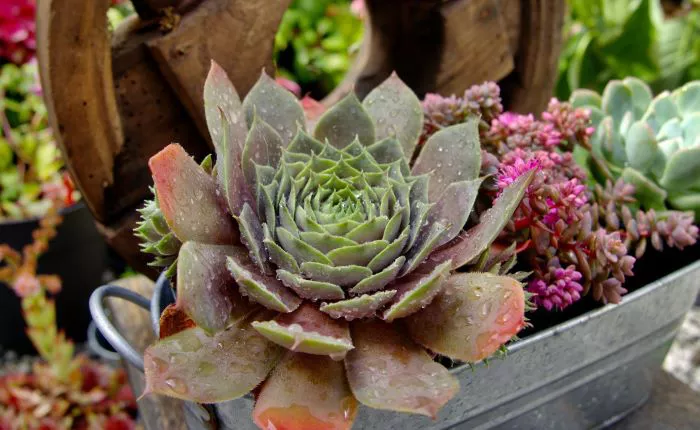Growing succulents from leaves is a rewarding and enjoyable process. This method allows you to propagate new plants from existing ones, expanding your collection without the need for seeds or purchasing new plants. Succulents are resilient and adaptable, making them perfect candidates for propagation. In this article, we will explore how to successfully grow succulents from leaves, covering the necessary steps and best practices.
Understanding Leaf Propagation
Leaf propagation involves taking a healthy leaf from a succulent and encouraging it to grow roots and eventually form a new plant. This method works well for many succulent varieties, including popular types like Echeveria, Sedum, and Jade plants. However, not all succulents propagate successfully from leaves. It is essential to choose the right species for this method.
Selecting Healthy Leaves
The first step in propagating succulents from leaves is selecting the right leaves. Choose healthy, plump leaves from a mature plant. Look for leaves that are free from damage, pests, or disease. The best leaves are those that are firm and full of moisture. Avoid using leaves that are shriveled or discolored, as these may not propagate well.
When removing leaves, gently twist them from the stem. Be careful not to damage the leaf or the stem of the parent plant. A clean break is essential for successful propagation.
Allowing Leaves to Callous
After removing the leaves, it is crucial to allow them to callous over. This step helps prevent rot when the leaves are placed in the soil. Place the leaves on a dry surface, such as a paper towel or a plate, in a warm and bright location. Allow them to sit for a few days, typically between three to five days. During this time, the cut end of the leaf will dry out and form a protective callous.
Preparing the Soil
While the leaves are callousing, prepare the soil for propagation. Use a well-draining soil mix specifically designed for succulents and cacti. You can also create your own mix by combining potting soil, coarse sand, and perlite or pumice in equal parts. This mixture will provide the necessary drainage and aeration for the new roots.
Fill small pots or trays with the soil mix, ensuring that there is enough space for each leaf. It is best to use shallow containers, as the roots will not grow very deep initially.
Planting the Leaves
Once the leaves have calloused, it is time to plant them. Place each leaf on the surface of the prepared soil, ensuring that the cut end is touching the soil. You do not need to bury the leaf; simply resting it on top is sufficient. If you prefer, you can lightly press the cut end into the soil to secure it.
Space the leaves apart to allow for air circulation and prevent them from touching each other. This spacing helps reduce the risk of rot and allows each leaf to grow independently.
Watering the Leaves
After planting the leaves, it is important to water them properly. Mist the soil lightly with water using a spray bottle. Ensure the soil is moist but not soggy. Overwatering can lead to rot, so it is crucial to find the right balance.
Once the leaves are planted, avoid watering again until you see new growth. This may take several weeks. During this time, keep the soil slightly moist but allow it to dry out between misting. Too much moisture can hinder the rooting process.
Providing Proper Light
Light is essential for the successful propagation of succulent leaves. Place the pots in a bright location with indirect sunlight. Direct sunlight can scorch the leaves, especially in the early stages of growth. A south or west-facing window is often ideal for providing the right amount of light.
If you are propagating indoors, consider using grow lights if natural light is limited. This will ensure that the leaves receive adequate light for healthy growth.
Monitoring Growth
As time passes, you will begin to see new roots and tiny plantlets developing from the base of the leaves. This process can take anywhere from a few weeks to a few months, depending on the succulent species and environmental conditions.
Once the new plantlets are a few inches tall and have developed a healthy root system, they can be separated from the original leaf. Use clean scissors or a sharp knife to cut the plantlet away from the leaf. Be careful not to damage the roots during this process.
Transplanting the New Succulents
After separating the new plantlets, it is time to transplant them into their own pots. Choose small pots with drainage holes and fill them with the same well-draining soil mix used for propagation. Gently plant the new succulent in the soil, ensuring that the roots are covered and the base of the plant is level with the soil surface.
Water the newly transplanted succulents lightly to help settle the soil around the roots. Allow the soil to dry out between waterings, just as you would with mature succulents.
Caring for the New Succulents
Once transplanted, the new succulents require proper care to thrive. Place them in a bright location with indirect sunlight, gradually acclimating them to more direct light if needed. Monitor their watering needs closely. Water them when the soil is dry, ensuring that they do not sit in excess moisture.
Fertilizing is not necessary for young succulents until they are established. After a few months, you can begin to fertilize them with a diluted succulent fertilizer during the growing season.
Conclusion
Growing succulents from leaves is a simple and rewarding propagation method. By selecting healthy leaves, allowing them to callous, and providing the right soil and light conditions, you can successfully grow new plants. With patience and care, you can expand your succulent collection and enjoy the beauty of these resilient plants. Whether you are a beginner or an experienced gardener, propagating succulents from leaves is a fulfilling way to connect with nature and enhance your gardening skills.


